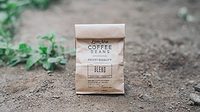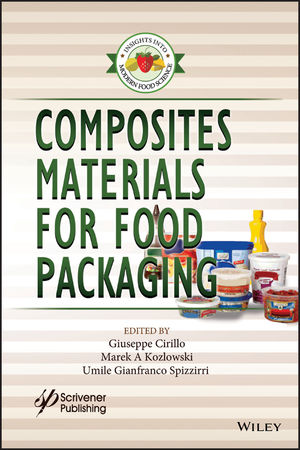Food Preservation Through Packaging Innovation
As the market for value-added, minimally processed, pre-packaged food grows, manufacturers find different ways to effectively package these oxygen, moisture, aroma and time-sensitive products.
While there are many packaging methods to extend a food product's life, the main objective is clear -- to retard microbial spoilage and provide the freshest, safest product possible to consumers. Although modified atmosphere packaging (MAP) -- the insertion of a mixture of gases usually including oxygen, carbon dioxide and nitrogen into a package to preserve food -- is a popular method that appeals to consumers' preference for fresh and additive-free foods, other food preservation techniques in combination with MAP are gaining acceptance. "What we're talking about these days is not just modified atmosphere, but a more holistic approach or 'hurdle' approach," said Dr. Aaron Brody, managing director of industry consultancy Rubbright * Brody, Inc. "It isn't simple single technology, it's multiple technologies integrated together establishing obstacles for microorganisms to grow. These obstacles can be combinations of temperature control, pH control, water activity control and atmospheric control all in concert with each other," said Brody.
Each element of the MAP equation -- gas, equipment and film suppliers -- must work in harmony to create a successful MAP package. Michael Thaler, director of marketing at Air Liquide America (Houston, TX), notes that many factors must be examined before a food company implements a MAP system. quot;Generally, we take a look at the entire system from the receipt of the raw ingredients that [are] used to make the product, all the way through the processing, packaging, the gases and holding at the storage facility," Thaler said.
According to Thaler, food companies should focus on the quality of the food product before the length of its shelf life. "Instead of long shelf life, [Air Liquide] tries to see how much of the original flavor and original quality we can retain by the time the consumer eats the food product. It's not a question of how long does it last before you throw it away -- it's does it taste like it was just produced at the plant or does it taste like it's been sitting in storage somewhere for a month," said Thaler.
Following the MAP to success
As food companies continue to see the home meal replacement (HMR) market grow in popularity, many are using MAP technology to market ready-to-heat products with extended shelf lives. One company using extended shelf life to its marketing advantage is Northern Star Company, the potato division of Michael Foods, Inc. All of Northern Star's refrigerated de-hydro cooled (DHC) pre-cooked cut and sliced potato products, available at the retail level under the Simply Potatoes and Diner's Choice labels, have a 30-day shelf life without preservatives. Proprietary technology in both the manufacturing and packaging process, combined with a strong quality assurance program, allow for the 30-day shelf life, said Dr. Sharon Marsh, director of research and development at Northern Star.
To achieve this extended shelf life, Marsh agrees that using a "combined technology" approach to MAP packaging creates more barriers to microbial growth. "Consumers want less additives and preservatives in their foods. Ultimately, this provides a challenge for any food manufacturer who wants to provide this type of product with an extended shelf life. We always keep the hurdles of spoilage in the back of our minds," Marsh said.
DeLuca, Inc. began manufacturing their Ed & Joan DeLuca brand of refrigerated entrees with a 30-day shelf life nearly ten years ago. "In all of our years of both sourcing and working with packaging materials that have the barrier properties necessary to achieve our extended shelf life, we have found it necessary to work with manufacturers to create custom specifications in order to produce the desired results," said Jeffrey L. Zwicker, president and CEO of DeLuca, Inc. According to Zwicker, MAP technology was the last "hurdle" needed in the packaging process to achieve the 30-day shelf life.
DeLuca has made product safety a top priority in order to deliver fresh foods with minimal processing. "We recognized a long time ago, that in order to fulfill our vision of a national brand, we would need extended shelf life for manufacturing and distribution logistics," said Zwicker. "Further, we did not want to have to use preservatives to achieve our goals."
Assuring product safety throughout the entire cold chain is also paramount to success. "The greatest percentage of our products are shipped directly to our customers' warehouses and therefore are not as subject to potential abuse as perhaps other methods," said Zwicker. The company also monitors the temperature of the showcases where its products are sold as often as possible. "At the end of the day, you must market a superior product to make it in the fresh food arena. Consumer expectations are much higher than that of a frozen entree, and fresh costs more, so we need to deliver on that expectation in order to be successful," said Zwicker.
DeLuca, recently acquired by Perdue Farms Inc., has introduced a line of Perdue chicken-based entrees co-branded with the Ed & Joan DeLuca brand. The HMR entrees include Chicken a la king with Egg Noodles, Chunky Chicken Parmigiana with Rotini, Chicken Cacciatore over Linguine and Chicken Lasagna.
Pushing back 'best before' dairy dates
Dairy foods are also using forms of advanced packaging technologies to enhance shelf life. Ryan Foods, a wholly-owned subsidiary of Dean Foods that produces extended shelf life (ESL) fluid milk products, uses ESL processing and packaging to push back their "best before" dates. ESL processing and packaging employs ultra high temperature (UHT) pasteurization. According to Dan Green, president of Ryan Foods, this process keeps the bacterial content extremely low and the product will hold its shelf life for up to 60 days when refrigerated.
According to Green, because most consumers do not understand the difference between pasteurized milk and ultra pasteurized milk, ESL technology is driven more by the distribution base rather than the consumer. "What [consumers] like to see is the fact that [milk] has the longest shelf life that's possible. Once you open the package, it lasts no longer than regular milk -- seven days. So really the benefit is prior to opening the package and the ability to reach out to a wider geographical distribution by going through warehouses or alternate and secondary distribution channels," said Green.
This extended shelf life does not come without cost, says Green. "The extended shelf life improves overall operating efficiencies in terms of plant scheduling and inventory management, but there's the cost of processing that you have to incur because we take it to a much higher temperature. So you pay a premium for it, but at the same time, it is lower cost distribution," said Green.
Another technology currently being used to extend the life of packaged dairy foods is a carbon dioxide injection process that maintains the freshness, consistency and taste of dairy products. This process can extend the shelf life of several dairy products as much as 50 to 100 percent. According to Walter Sienkiewicz, manager of commercial development at Praxair's food segment division in Chicago, there are currently up to 30 processors that are using carbon dioxide in cottage cheese for shelf life extension. Praxair has also used carbon dioxide injection to extend the shelf life for other dairy items such as ice cream mixes, ricotta cheese and yogurt.
Sienkiewicz sees the benefits of extended shelf life in greater operating efficiencies, expanded distribution and increased savings. "One processor used to be a very small, regional player with their dairy product and now they're shipping it across 12 to 15 states because of the added shelf life [using carbon dioxide]," said Sienkiewicz. According to Sienkiewicz, longer shelf life also leads to less product changeover over a period of time for food processors, translating into longer product runs and increased economic savings.
Packaging moves into action
Customized films are also being developed to maintain shelf life and inhibit spoilage. Landec Corp. (Menlo Park, CA) has introduced its Intellipac packaging for applications in the fresh-cut produce industry. The Intellipac MAP system incorporates a super-high oxygen permeable membrane used over an aperture in the form of a label onto pre-made bags, film rollstock and lidding stock. By using these breathable membranes, package atmospheres can be tailored to accommodate high respiration rates and compensate for modest ranges in temperature abuse, resulting in extended shelf life and higher quality taste, smell and appearance of fresh produce.
California-based food processor Apio uses Intellipac breathable membranes to help provide a 14-day refrigerated shelf life for its "Value Fresh" brand party tray that contains six pounds of fresh pre-cut vegetables and prepackaged dip. The multi-compartment tray, currently sold in club stores, is the first use of Intellipac technology in rigid food containers, and is the first and only MAP party tray known in the market place, according to Lynn Biggs, Landec's director of sales and marketing. Intellipac membranes are also used for Apio's bagged broccoli and cauliflower vegetable mix as part of its "Eat Smart" retail bulk bin program and is sold as an individual bag in club stores as well.
There are also two new invisible films that remove residual oxygen from modified atmosphere packaging without changing the look or feel of the existing packaging. A new low-oxygen packaging system called OS1000 from Cryovac North America (Duncan, SC), reduces oxygen levels in MAP applications to "parts per million" -- essentially eliminating residual oxygen levels in four to ten days, enhancing product shelf life. The film begins to scavenge only when activated by Cryovac's ultraviolet triggering unit installed on the processor's packaging line. Because it is activated independently of the product in the package, the film will work with wet or dry food products.
Amoco Chemical's (Chicago, IL) Amosorb oxygen scavenger is another transparent film that can greatly enhance shelf life. By using Amosorb 3000 copolyester as a core layer in a multilayer polyester container, shelf life can be extended for items such as fruit juices, tomato-based products, ready-to-drink teas and beer.
Looking for a reprint of this article?
From high-res PDFs to custom plaques, order your copy today!






